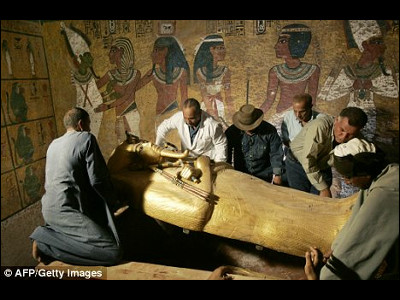A rare case of the era when idol worship was prohibited, when the head of God was discovered about 3000 years ago?

At the ancient ruins in Israel, the 'God's head', which is believed to have been created about 3000 years ago, was discovered.
3,000-year-old head may be face of God | Live Science
The archeological team of Israeli archaeologists is about 2 inches in size at the ancient fortress ruins, Khirbet Qeiyafa , in the valley of Ella near the Israeli city of Beth Shemesh. I found a clay object.
This object is believed to be a clay imitation of the head of ' Yahweh, ' the only God in the Old and New Testaments, and is attracting attention as a very rare object. The reason why the head of God 3000 years ago discovered in Israel is unusual is that in ancient Israel the idol worship was prohibited by the 10 commandments of Moses, so it was forbidden in Israel at that time to create the idol of God. It is because Therefore, it is possible that the head of God discovered this time is a rare case in which an ancient Israelite who was originally prohibited created an idol of God.
The following is the 'God's Head' 3000 years ago, found in Ella's Fortress

Heading the excavation team who discovered the head of God in the Ella fortress was Joseph Garfinkel, director of the Archaeological Institute at
Garfinkel believes that what was discovered this time is part of a horse-ridden figurine that resembles a god. One of the reasons is that the head of God is the only figurine found in the Ela's fortress, which is about 3000 years old, and it was discovered in what is thought to be a palace within the fortress, so It was probably very important to the people who lived in the palace. Garfinkel points out that the man who lived in the palace where the head of God was discovered may be Solomon , considering the site is about 3000 years old.
There is a description in the Old Testament that Yahweh was floating in the sky, and one book in the Old Testament, the Habakkuk , says that Yahweh straddled a horse.

Nothing has been found in the fortress of Ella except the head of the god that was discovered this time, but similar 'figures that seem to imitate a horse-riding god' have been found in Israeli temples and cemeteries .. For example, at the
Garfinkel said, 'It was important for the ancient Israelites to see God visually,' because God's figurines have been found in religiously important places such as palaces, temples, and graveyards. I wrote it. In addition, 'When a believer sees the face of an idol, at that very moment, the idol sees the believer. This is a metaphysical moment, the contact between the earth and heaven, the center of religious experience. There is one.” According to Garfinkel, it was 'a common practice' to see the idol of God in temples and other important places in the ancient Near East .

Garfinkel speculates that 'description of the god' was banned in ancient Israel 'around the 8th century BC,' while saying 'the exact timing is unknown.'
Meanwhile, science-based media Live Science contacted several scholars unrelated to Garfinkel's investigation and asked for comment on the interpretation of the divine head found in the fortress of Ella. It seems that you got an opinion.
At the time of publication of the article, it was an archaeologist at Tel Aviv University who could comment, Oded Lipschits who oversees the excavations at Tel Moza, and Shua Kisilevitz, who works as an archaeologist at the Israeli Antiquities Authority and Tel Aviv University. Two people. Lipschits and Kisilevitz have jointly condemned Garfinkel's idea, 'Excluding the possibility that the human head found in Tel Moza and Ella's fortress was a depiction of God. No. However, the marks, symbols such as horns, crescents, and bulls, and other attributes of the expression found in the ancient Near East cannot be found in the figurines discovered this time, and when God is expressed with animals, God did not straddle animals.'
In addition, Lipschits and colleagues pointed out from archaeological and historical studies that Yahweh was not yet worshiped in the Near East 3000 years ago and was not the only God in Israel. ``Even if the idol discovered this time represents God, Yahweh did not appear in Israel before the 9th century BC, so he did not express it until at least the end of the 7th century BC,'' he added. I am. According to the two, the Pantheon was worshiped among the Canaanites living in Israel at the time.
``Overall, Garfinkel's dissertation was deficient in inaccuracy and methodological approach, and was the most relevant, including studies on ancient Near Eastern culture and excavations at Tel Moza sites,'' said the two. I disregarded the paper.'
Related Posts:
in Science, Posted by logu_ii







